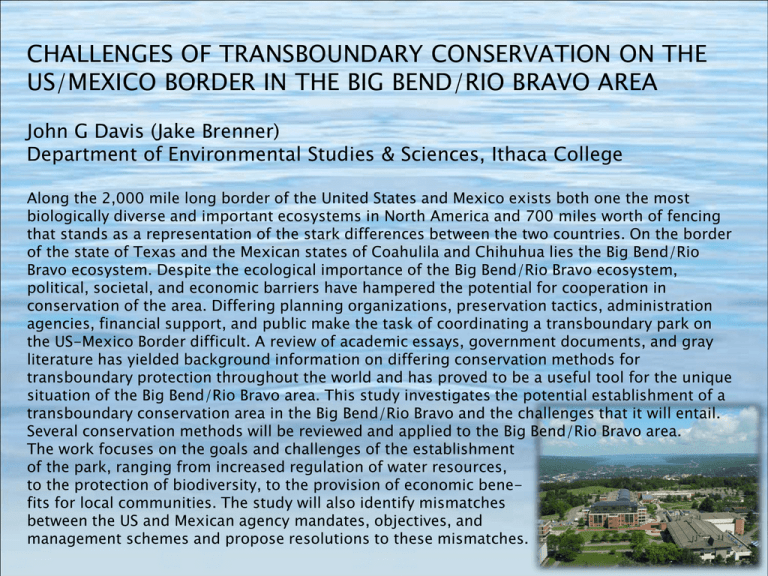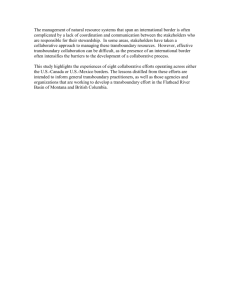Download CHALLENGES OF TRANSBOUNDARY CONSERVATION ON THE US/MEXICO BORDER IN THE BIG BEND/RIO BRAVO AREA
advertisement

CHALLENGES OF TRANSBOUNDARY CONSERVATION ON THE US/MEXICO BORDER IN THE BIG BEND/RIO BRAVO AREA John G Davis (Jake Brenner) Department of Environmental Studies & Sciences, Ithaca College Along the 2,000 mile long border of the United States and Mexico exists both one the most biologically diverse and important ecosystems in North America and 700 miles worth of fencing that stands as a representation of the stark differences between the two countries. On the border of the state of Texas and the Mexican states of Coahulila and Chihuhua lies the Big Bend/Rio Bravo ecosystem. Despite the ecological importance of the Big Bend/Rio Bravo ecosystem, political, societal, and economic barriers have hampered the potential for cooperation in conservation of the area. Differing planning organizations, preservation tactics, administration agencies, financial support, and public make the task of coordinating a transboundary park on the US-Mexico Border difficult. A review of academic essays, government documents, and gray literature has yielded background information on differing conservation methods for transboundary protection throughout the world and has proved to be a useful tool for the unique situation of the Big Bend/Rio Bravo area. This study investigates the potential establishment of a transboundary conservation area in the Big Bend/Rio Bravo and the challenges that it will entail. Several conservation methods will be reviewed and applied to the Big Bend/Rio Bravo area. The work focuses on the goals and challenges of the establishment of the park, ranging from increased regulation of water resources, to the protection of biodiversity, to the provision of economic benefits for local communities. The study will also identify mismatches between the US and Mexican agency mandates, objectives, and management schemes and propose resolutions to these mismatches.


